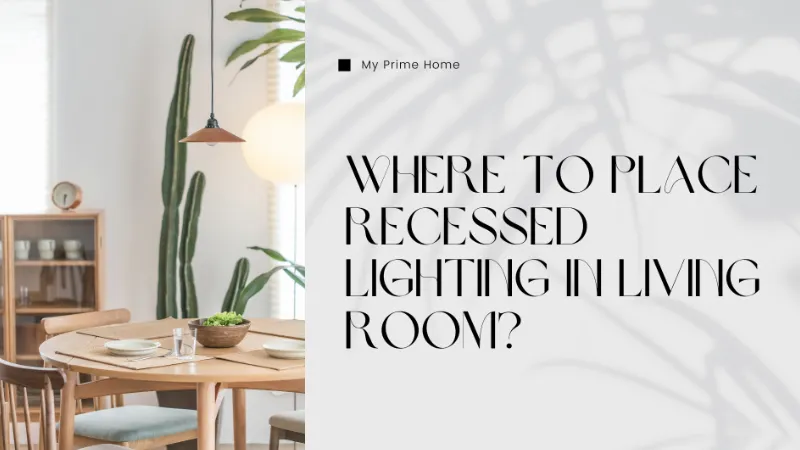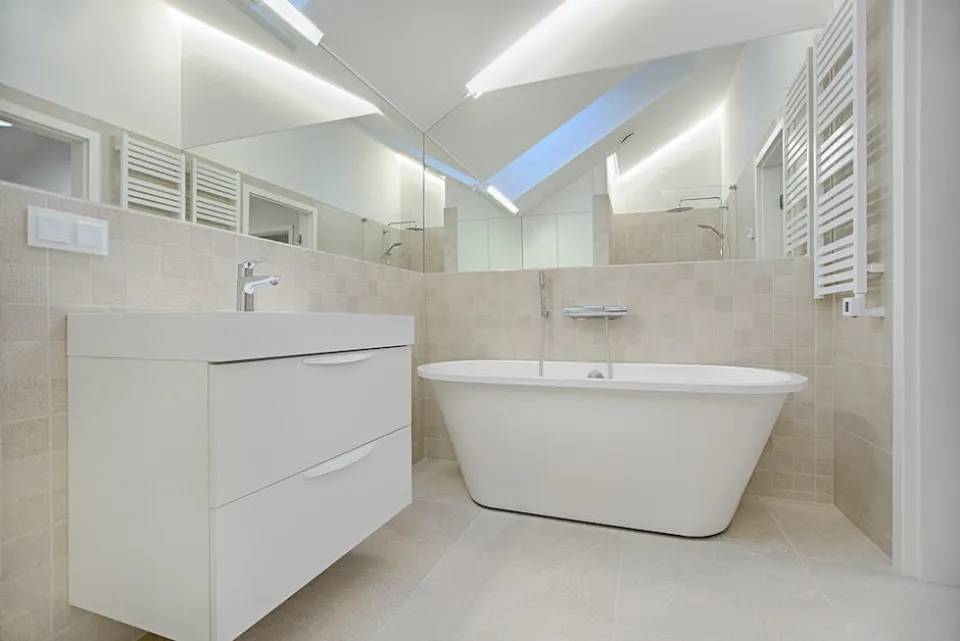We’re here to share key advice from designers on everything from placement to customization options if you’re unsure of exactly where recessed lighting belongs in your living room and what factors to keep in mind when using it.
To achieve the best effect, place the recessed lighting two to three feet away from the walls in living room. Cons: Recessed lighting requires adequate spacing to give any space its best appearance. Consider using a chandelier or table and accent lamps in place of a ceiling light if the ceiling in your space is too low to permit proper spacing.
Why Do We Need to Have a Good Recessed Lighting Layout Plan in the Living Room?
Many people may want to know why do we need to have a good recessed lighting layout plan in the living room:
Avoid Too Bright Lighting
If they aren’t positioned correctly, most lights that are installed in a living room will be too overpowering. The main issue with lamps is changing the bulb’s wattage to make them less bright. Standing lamps frequently have dimming controls, which makes it simpler but can still be blinding depending on positioning. Recessed lighting is more controlled, resulting in a light that is dispersed more efficiently.
You can continue to use these lamps for decorative purposes as accent lighting in your living room. But you still need a light source overhead that evenly distributes light throughout the room. This provides adequate light spacing while giving you more freedom over what you want to light up. Additionally, there isn’t a single spot in your living room that makes any other area too bright.
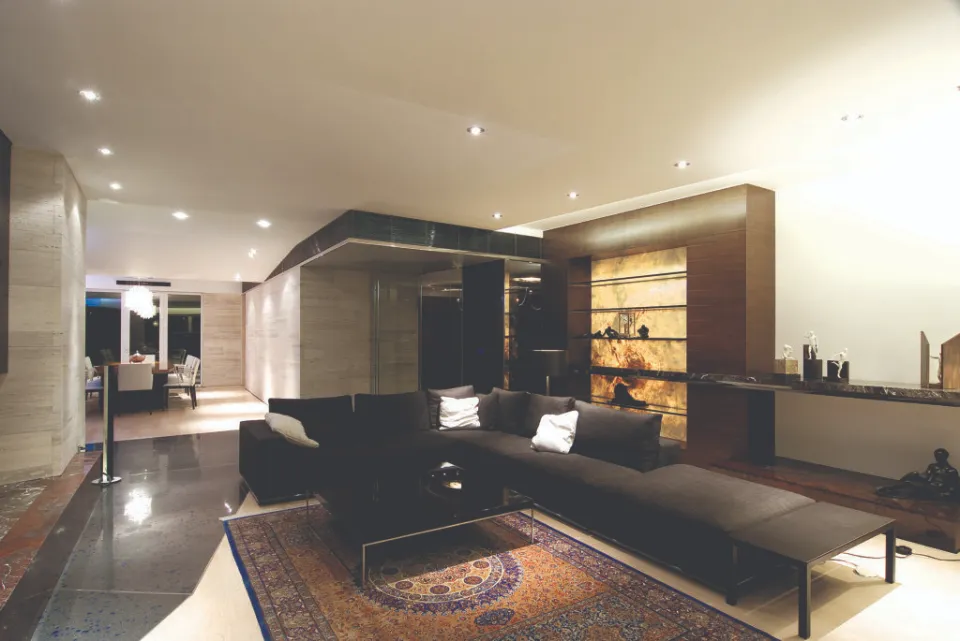
Avoid Too Dim Lighting
If you want to convey a feeling of intimacy, dark rooms are frequently thought of as cozy. But when you can’t see where you’re going, it can be difficult to navigate a space without tripping over objects. Just the right amount of light must be spread throughout your living room like a blanket. This will enable clear visibility without overly brightening the space.
Selected lights can be on or off because LED lights can be programmed to be dimmable and independent of one another. You can further modify your recessed lights to illuminate some items more than others. The coffee table, where you keep all of your snacks, is one of these potentially significant spaces in the family room. You definitely don’t want to spill your beverage due to a lack of tabletop visibility.
Reduce Shadows
Unless you specifically want different light and dark in your living room, that is entirely up to you. However, it’s not fun to run into a shadow at the edge of a cabinet or something hard. You may or may not know that the main reason you stomped your foot into something sharp was that you didn’t see it. Shadows on the floor of your living room should be avoided for this and other reasons. You can still see small details thanks to a lot of ambient light.
All of the objects in the room are illuminated by recessed lighting. Despite not having significant gaps in between, you can still adjust the light level to make it more comfortable. You can navigate the room more safely by mapping the location of the light and the distance from the walls. The furniture and sofa are visible whenever you enter the room if you do this planning in advance.
Avoid Glare on the TV Screen
The last thing you want is glare on the screen, especially now that big-screen TVs are so common in homes. This is a bit of a trick, but it can be overcome. It’s important to strategically position lights around your TV to minimize reflections. Even if you position lights at the very corners around your TV you still need to follow a layout pattern. Film productions actually employ one of the oldest methods for preventing glare.
Your TV should be mounted at a 90-degree angle to the wall when you anchor it to the wall. You can insert thin washers inside the mounting bracket if you plan ahead just a little bit. Your TV will now lean slightly to the right. It is sufficient to create a graded angle of up to 1-2% without the perspective being overly extreme. Otherwise, any recessed ceiling light that might reflect on the screen is hidden.
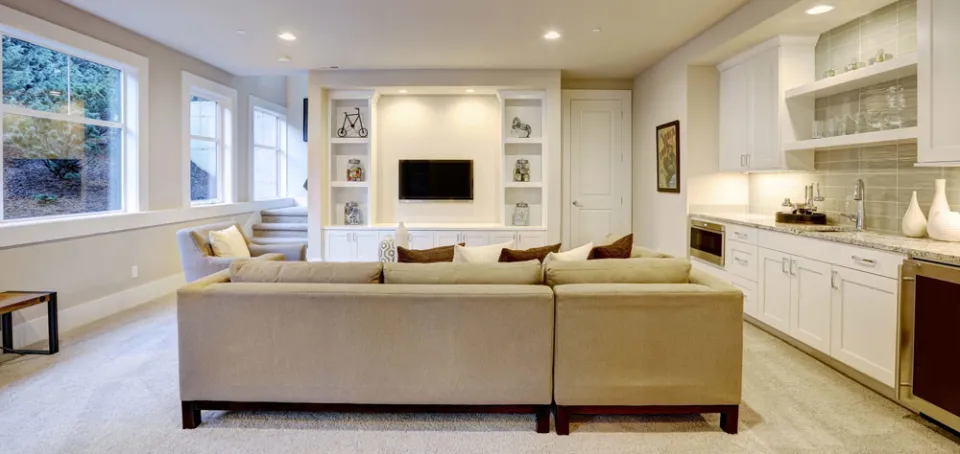
Add More Comfortable Lighting
The ability to alter colors and color temperatures is what I adore most about LED lighting. The ability to change colors with a remote control or on a smartphone is now available on all modern LED fixtures. Color temperatures can create a welcoming and cozy atmosphere in a space. A dimmer that is operated manually by a switch or remotely can be used to accomplish this.
Your recessed light pots’ additional benefit of RGB LEDs adds more mood-enhancing qualities. With color-changing light effects, holidays and celebrations will become an entirely new experience. Additionally, it makes the experience of watching a movie on your TV more memorable. These interchangeable colored lights can add a romantic or festive atmosphere to a space.
Controlled Floodlighting in the Living Room
The patriarchal chain of command includes having access to the remote control in the living room. In some instances, it feels almost like you’re in charge of the entire world. Nowadays, many of these lighting controls are done through smartphone apps thanks to the advancement of LED light systems. These can be linked to the voice controllers for your Google or Alexa smart homes. But utilizing a remote is more impressive.
Lighting controls can change individual light fixtures or entire clusters of recessed lights. If it’s possible, the lights can also be changed in color as well as dimmed or brightened. It’s nice to have a smart home app because it allows you to control ambient lights that aren’t connected to your recessed lights. The only problem will be the number of people in the room who have access to the smartphone app code.
If you love chandeliers but have recessed lights in your home, we’ll show you how to convert a recessed light to a pendant.
How to Determine Where to Place Recessed Lighting?
Below will tell you how to determine where to place recessed lighting:
Lighting Strategy
For a typical 8-foot ceiling, recessed lights should be positioned approximately 2 feet from the wall. As a result, the light creates a calming atmosphere by illuminating the wall and ceiling area. By positioning the recessed lighting directly above the object, you can illuminate interesting sculptures or works of art, effectively giving them a spotlight so that guests will see them as soon as they enter the space.
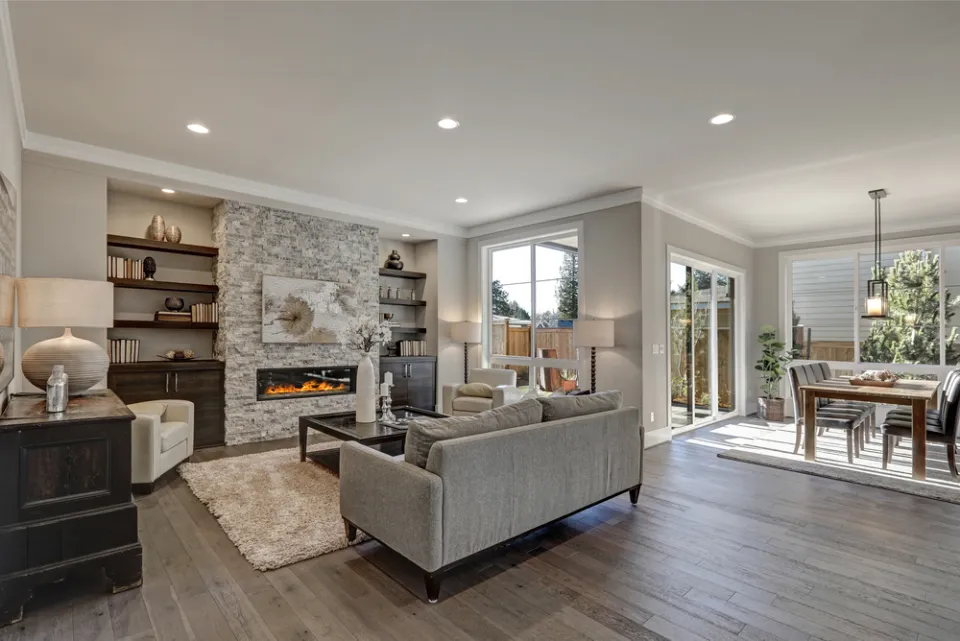
Spacing
Each light canister needs to be spaced uniformly across the wall area if you’re installing multiple recessed lights to highlight a wall or a number of items. Each light can fully illuminate the space without much overlap thanks to the even spacing. A very bright light will be produced on one side of the wall by placing the canisters too closely together, while the remaining area will appear dark.
Ceiling Considerations
It is best practice to measure the area above the ceiling before cutting into the surface to install recessed lights. The light canister needs enough space above the ceiling surface to fit comfortably; a small roof overhang or ceiling joist cannot be moved to make this happen. The ceiling joists can be located using a stud finder tool, and you can also go outside to look for them where the roof and ceiling meet. If the construction of a permanent structure interferes with the physical canister, an initial lighting design might need to be changed.
Safety Factors
Recessed lights can also be useful for safety in a dim hallway; to illuminate the area, place the canisters directly in the middle above the walkway. Furthermore, recessed lighting is an option for closet lighting. Recessed lighting reduces the risk of a fire occurring by preventing clothing stored on a top shelf from unintentionally falling onto a hot bulb.
Suggested reading: So, does a bedroom have to have a closet? Below will tell you what makes a bedroom a bedroom. Surprise! The answer to this question is not that simple. In order to share our research with you here, we conducted a little investigation. Keep reading.
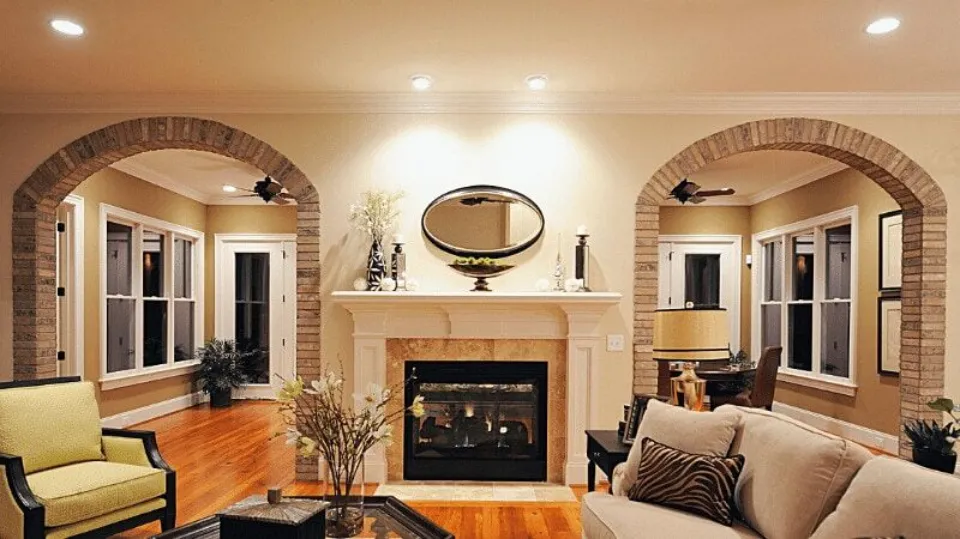
FAQs
How Many Recessed Lights Should I Put in My Living Room?
Everything you add in the way of new recessed lighting needs to be compatible with your current fixtures. The number of fixtures you’ll need depends on how big your space is. A common rule of thumb is that you use one recessed light for every 4 to 6 square feet of ceiling space. This results in uniform, all-around illumination.
Where Should You Not Put Recessed Lights?
Avoid recessed lighting fixtures placed too close together or in rows down the center of the room. An airport runway may be the visual effect of this type of installation. Your recessed lighting fixtures’ sizes should be in proportion to their spacing.
Is Recessed Lighting Good for Living Room?
Recessed lighting can be a great addition to any room. The kitchen, bathroom, and living room are the three most frequently installed recessed lighting areas. Additionally, outdoor living spaces frequently employ this kind of lighting.
Does Recessed Lighting Make Room Look Bigger?
As an added bonus, they also help make the room look bigger by freeing up more space. Installing recessed lights will also provide you with clear, focused light that you can use to enhance the design of your entire room.
Conclusion: Where to Place Recessed Lighting in Living Room?
When it comes to recessed lighting, you just need a good lighting plan; you don’t need lighting designer advice. Any one of these suggestions can help you hang different types of lights from your ceiling for a wide range of spectacular effects. The hardest part of setting up the light locations is taking a measurement, if you’ve learned anything from this brief guide. Due to the fact that installing fixtures only requires a small amount of ceiling space, installation is also not too difficult.
It will also be helpful if you have some electrical experience too. I recommend that you get help if you’re not so confident in the final wiring. Always turn off the main electricity in your living room out of an abundance of caution.
If you have any questions, please leave a comment. My Prime Home will give you more room ideas. Good luck.
